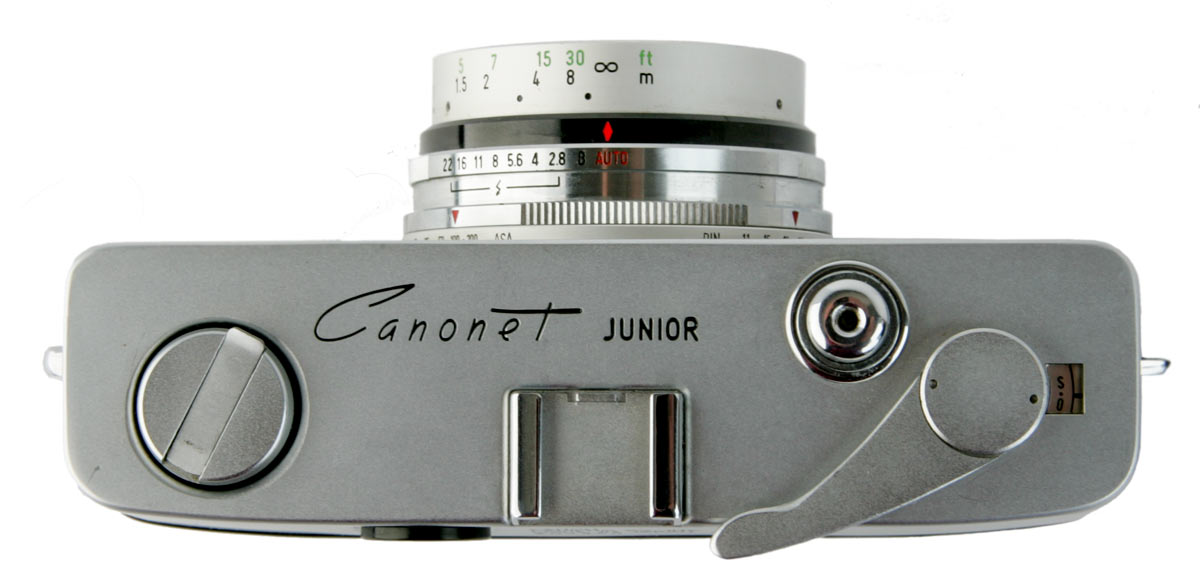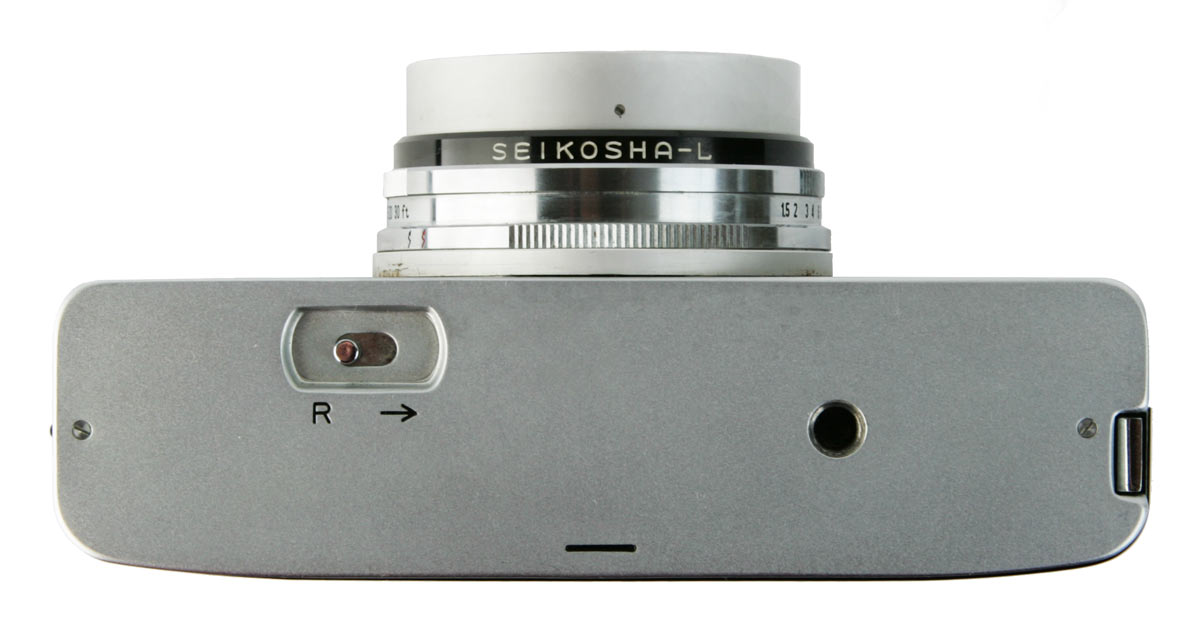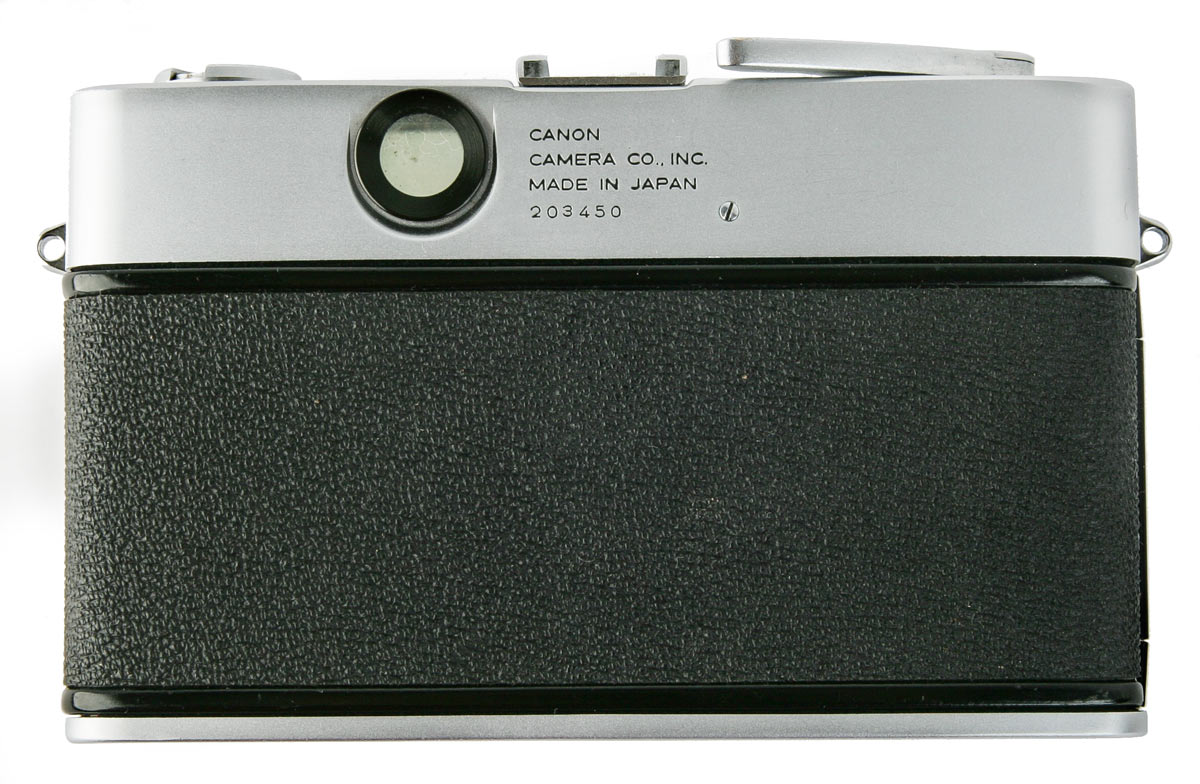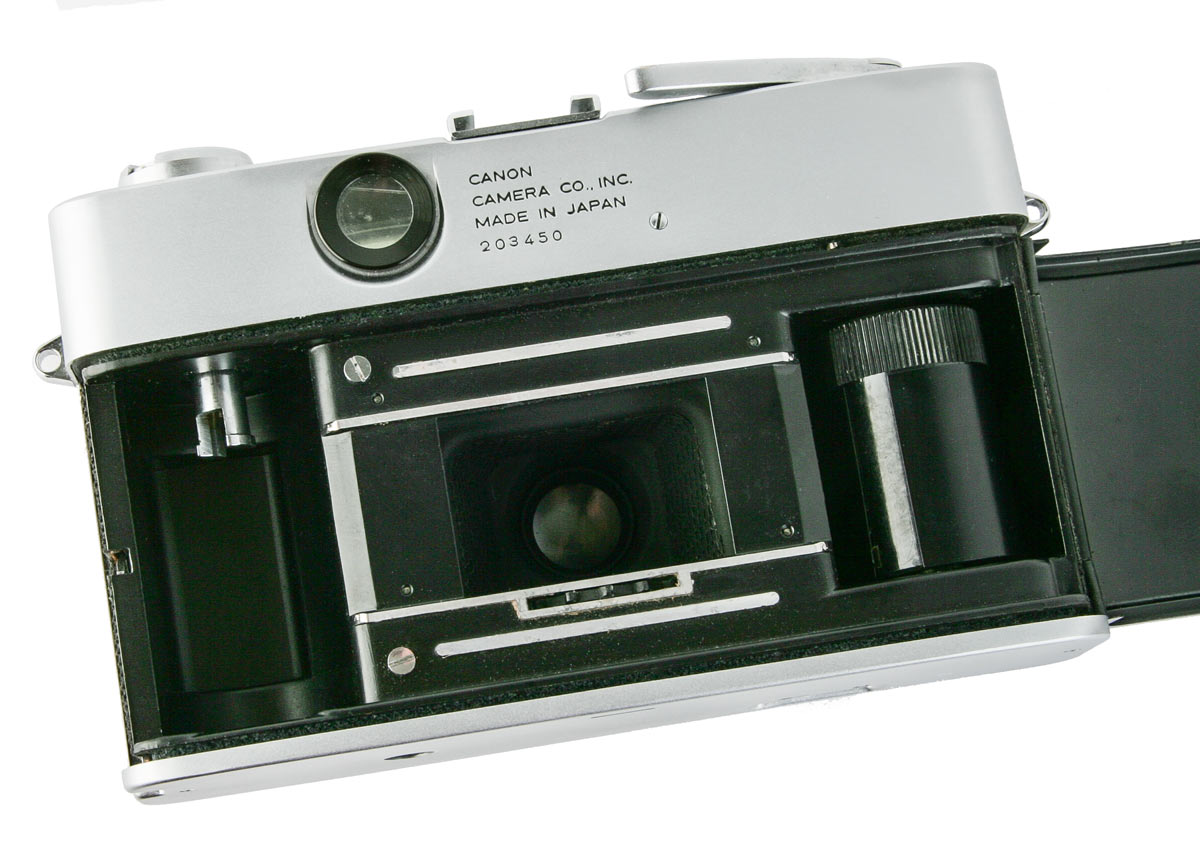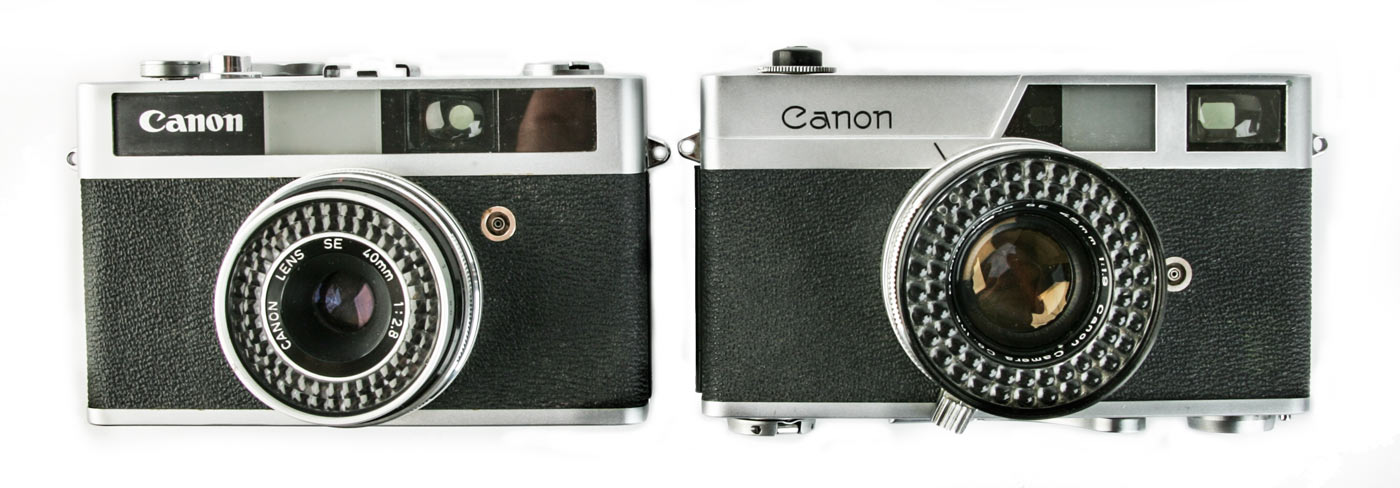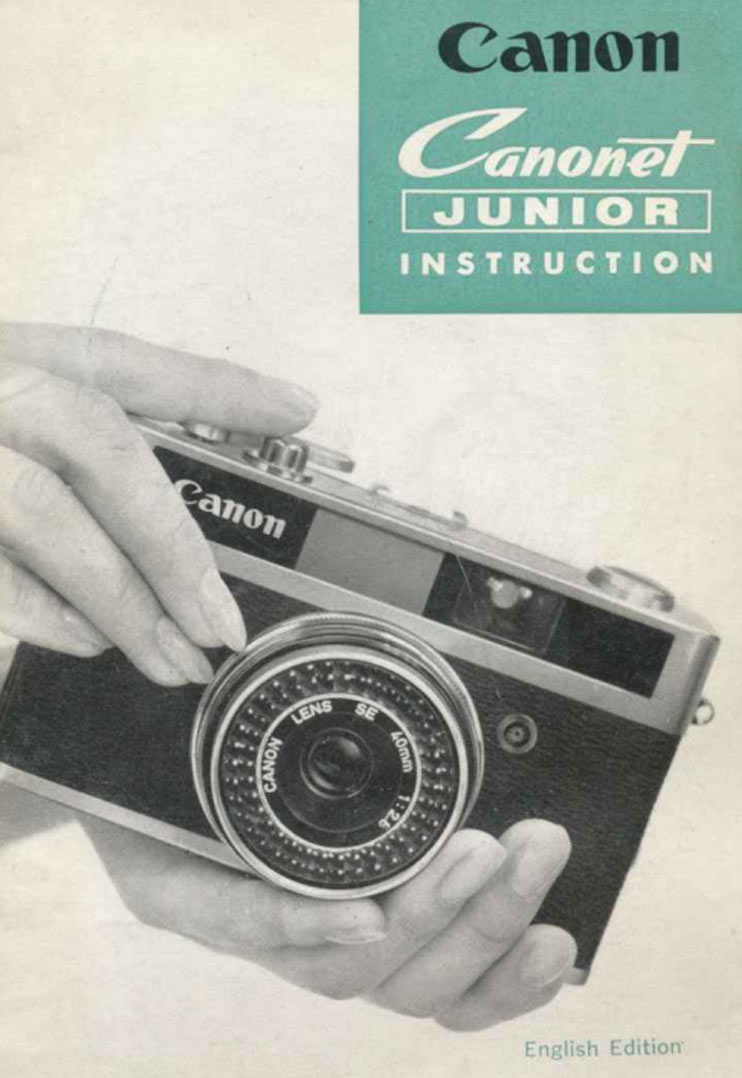The Canonet Junior
The Simpler More Automatic Canonet
In April of 1963, two years after the introduction of the Canonet, the Canonet Junior was released. This camera was simpler to operate which means more automatic and easier to operate for entry level photographers.
The range finder was eliminated in pursuit of that simplicity. Focus could be set using the distance scale on the lens, a process called “zone focusing”. There were detents at the most useful focus distances but there was no confirmation of focus via a split image.
The film advance lever was moved to the top of the camera as was the rewind crank which can be plainly seen in the photos opposite.
In the Auto setting, both aperture and shutter speed were automatically set. Taken off Automatic only the aperture could be set. The camera would only work in manual or aperture priority
In the Auto setting, both aperture and shutter speed were automatically set. Taken off Automatic only the aperture could be set. The camera would only work in manual or aperture priority mode. Shutter speed was selected by the camera at all times and could not be set by the user.
In the view finder focus setting is shown by symbols for Mountains, a group of people or a single person’s head and shoulders. At the bottom of the viewfinder is the meter needle and it indicates the shutter speed being selected by the camera.
As in the Canonet, the selenium cell light meter was wrapped around the lens which was a simpler 40mm f/2.8 optic but still very adequate for a snapshot camera and better than most on the market at the time. Film speeds were limited to ASA 10 to 200.
The shutter was made by Seikosha and is so marked under the lens barrel. Hattori Tokei-ten founded the Seikosha plant in 1892 in Tokyo to manufacture clocks and watches. The word Seikosha means “precision” or “success” depending on how it is written.
In 1930 they began to make camera shutters and in 1933 created the first Japanese copy of the Compur shutter. Eventually this company became Seikō Kōki or simply the Seiko company known the world over for watches. To this day it still manufactures camera components.
The Canonet Junior was sold in USA under licence as the Bell & Howell Canonet 28.
The Canonet Junior is a pretty camera that feels good in the hands. By the standards of the day, it was small and reasonably compact. It is heavy for its size which speaks to the solid build of the body. The features were very “bare bones” but adequate, especially for an experienced user. For an entry level user or someone who is technically challenged, like my wife, I am not sure this camera is that suitable. But we have to judge it by cameras of the day. Most cameras were not simple to operate and settings were all manual. For the day, this camera was reasonably convenient.
I have two Juniors but neither of them have a working shutter. As a result I can’t take them out and try them. But I will dig into them and fix those shutters and then get back to you. One day! The shutters are probably frozen by hardened lubricant which has an easy fix: a solvent bath. But don’t try this yourself unless you are experienced in camera repair.
As usual, I won’t go into how to work the camera because you can read the User Manual for yourself on the left. This is one of those manuals I found on the web but it was a very poor copy. I have tried to clean it up so it is presentable.



